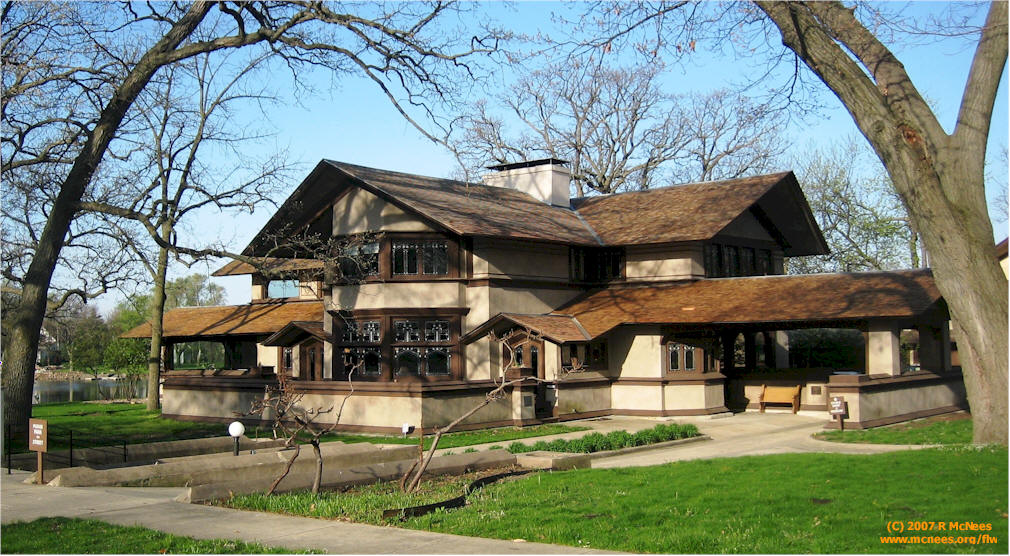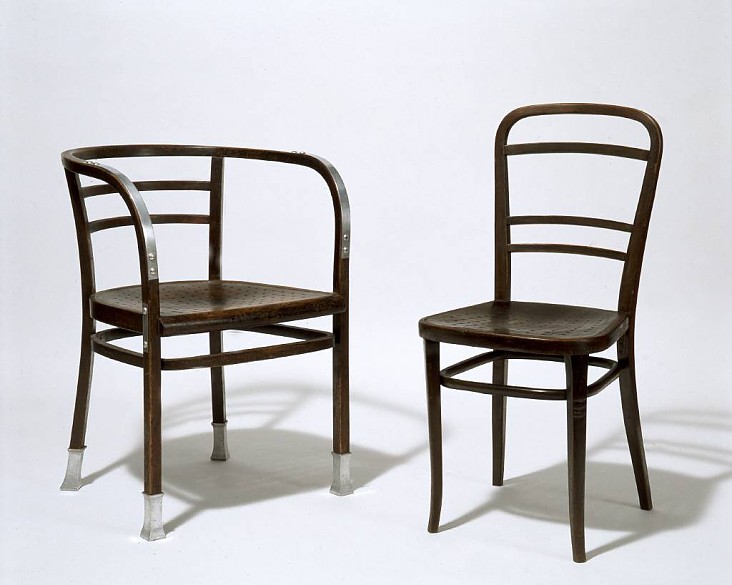Background:
The push into a new generation meant the emergence of a brand new style for all artists and designers. Modern design was a new direction of design. It was thought to provide clarity and force by these achievers. There were several pioneers of the modern design movement but one of the most influential was Frank Lloyd Wright.

Frank Lloyd Wright had designed over 1,000 works and ended up completing a total of 532. His design phases were separated into early Wright and later Wright. His idea of "Organic Architecture," is what helped his rise in popularity. While he worked in the office of Adler and Sullivan from 1887 to 1893, he began in own practice in Oak Park in 1893. This lead to the commission of many other works like the Robie House, the Unity Temple, and the Winslow House. His most popular style of residential architecture was the Prairie House Form. These included houses like the Hickox House and the Kankakee House.

Wright also dabbled in some commercial work. Some of his most famous projects included the Larkin Company and the Avery Coonley building. His concepts for these areas the public and private areas of the home created a sqaure-rectangular grid system from the art-glass and wall tiles is still commonly used today.

Another strongly popular style during this period was the De Stijl in the Netherlands. It was originated from a magazine called De Stijl which translates into "the style." The main concepts behind this exact style were to bring a new Utopian ideal to harmony and order. These designers and sculptors wanted to really emphasize pure abstraction and therefore reduced everything to its simplest form and color. All visual compositions were either vertical or horizontal and the colors were restricted to the basic primary along with black and white. It was highly inspired by artists of that time period. One of the most renowned designers was Gerrit Rietveld.

One of the most major styles of the modern movement was the International Style which began in 1920's and 1930's. The three main principles which defined the International Style were: the expression of volume rather than mass, the emphasis and balance rather than preconceived symmetry, and the expulsion of applied ornament. Two of the most famous architects of this style include Walter Gropius, who established Bauhaus - Design, and Mies van der Rohe.
Current Applications:






Discussion Blogs:
I read Nichole's blog. Even though we were given a lot of information, I like how she took time to address each of the different styles that we learned about and then directed in on one of the most influential architects/designers of that style to given an example.
I also read Katie's blog and I thought it was interesting how instead of focusing in on multiple different styles that we addressed in class she narrowed in on just the International Style and was able to go more deeply into detail on the characteristics as well as the designers who influenced this era.
Additional Links! - Architects of the International Style
http://www.youtube.com/watch?v=r2nJiAiD6AY
I read Nichole's blog. Even though we were given a lot of information, I like how she took time to address each of the different styles that we learned about and then directed in on one of the most influential architects/designers of that style to given an example.
I also read Katie's blog and I thought it was interesting how instead of focusing in on multiple different styles that we addressed in class she narrowed in on just the International Style and was able to go more deeply into detail on the characteristics as well as the designers who influenced this era.
Additional Links! - Architects of the International Style
http://www.youtube.com/watch?v=r2nJiAiD6AY


.jpg)










